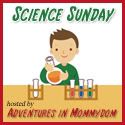Human Body: The Respiratory System
This week we talked about the respiratory system. We did some respiratory system demonstrations and played a couple of games. Here’s some highlights from the class:

One of the first things we did was learn about the different parts of the respiratory system. The picture above is actually a paper vest that was slipped over a child while talking about the various parts. We talked about our mouth and nasal cavity, vocal chords, trachea…

lungs, bronchi, and alveoli (tiny air sacs). This printable came from Human Body: Easy Make and Learn Projects.

One of the moms in the group is a music teacher. She shared facts about the vocal chords. Here she demonstrated how the vocal chord vibrate when air passes through them. Just take a toilet paper tube and wrap wax paper over one end. Secure with a rubber band. Make a vertical slit. Blow through the open end to demonstrate air vibrating the vocal chords.

She shared that the vocal chords can be different thicknesses and that is what causes a voice to be high or low. By placing different sized rubber bands across the opening of a small container, we could hear the different pitches when plucking the bands.

We talked about the importance of the diaphragm muscle. This interactive printable also came from the Human Body: Easy Make and Learn Projects book.

We also made our own lung model based on the directions found here. Doesn’t it look just like a lung? ;) All that is needed is the top portion of a 2-liter bottle, 2 rubber bands, 1 balloon, and a piece of plastic (or plastic grocery bag).

You can’t tell from the photo, but there is a little handle at the bottom of the bag. That bag represents the diaphragm muscle. When it was pulled down, the lung (balloon) inflated.

When it was pushed up, the lung (balloon) deflated. The kids loved this model of the respiratory system.
We used the Usborne First Encyclopedia of the Human Body book as our text for the day.

We also read and colored in some pages in our My First Human Body Books.
I passed out our Weekly Homework Sheet. This also explains what we talked about in class. I keep this simple because this is paired with the coloring book from above. I try to provide more hands-on learning than writing for this age-group (K-2nd).
You can see what we’ve done so far by visiting the Human Body Page. Linking up to Science Sunday too.






5 Comments:
What a great study! I really love the diagraphm model.
I seriously LOVE all the projects your doing with this.
Looks great! We just did bones, and I am ready to do more!!
I love the projects here. I am a respiratory therapist and this is one of the best ways I have ever seen the respiratory system presented.
Awesome job.
Kudos!!! YOU ROCK!!!
Robin RRT/RN
Aww,thanks Robin! :)
Post a Comment
Thanks for letting me know you were here! :) I appreciate you taking the time to write. If you have any questions, I'll try to answer it in the comments section here or via email if it is listed in your profile.
Subscribe to Post Comments [Atom]
<< Home